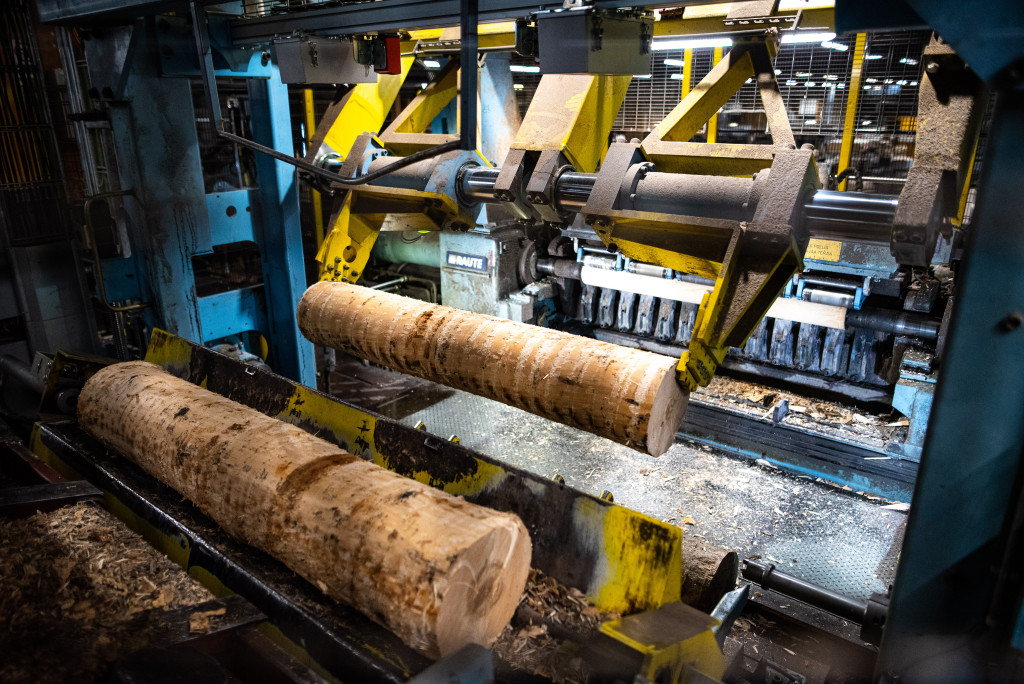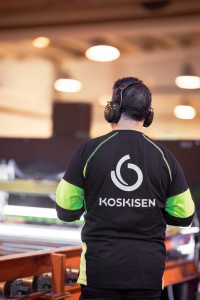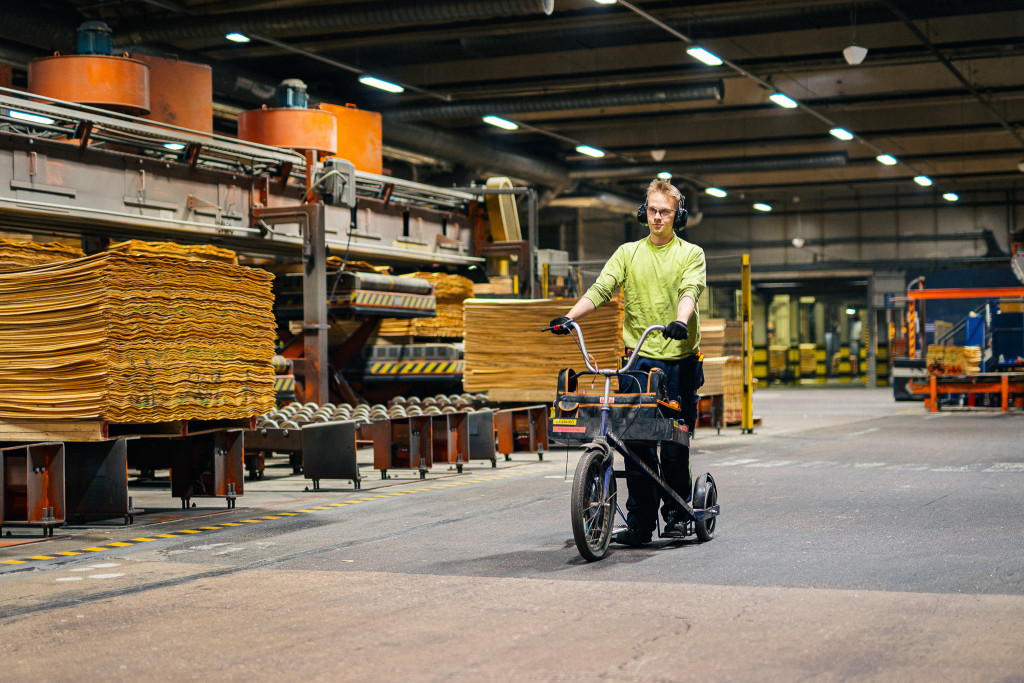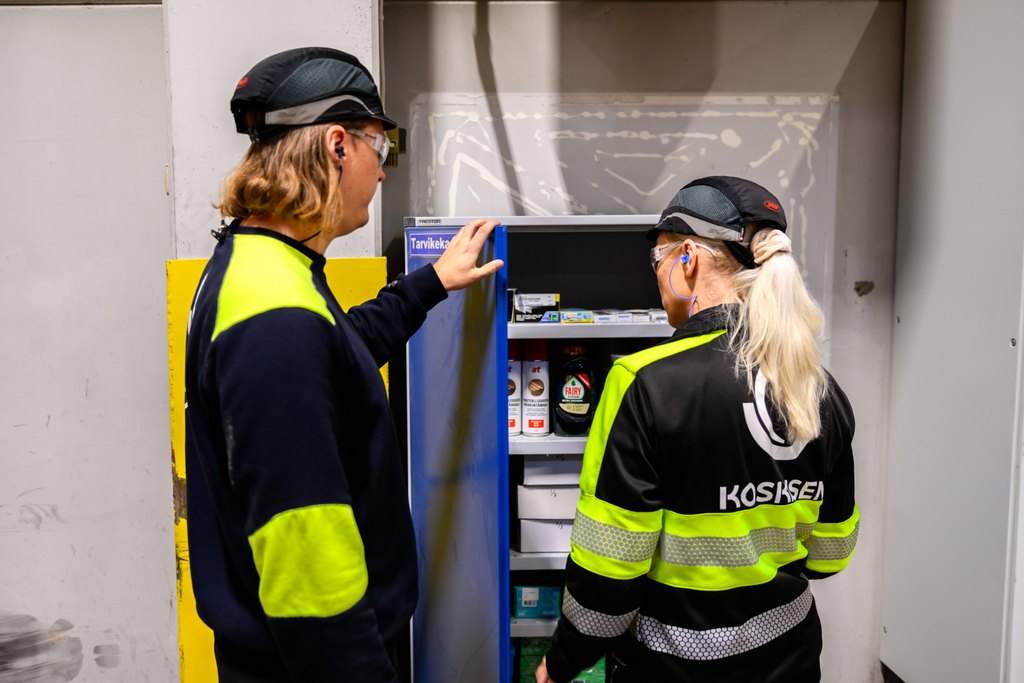“At Koskisen, we have strived to create a culture where people dare to make and report safety observations and boldly highlight safety-related shortcomings,” says Mari Kovero, Safety and Environment Manager for the Panel Industry.
According to Kovero, employees know the risks of their work best, which is why it is important to make observations in everyday life. This allows us to address safety deficiencies as early as possible before they become accidents.
“We monitor these observations closely,” says Logistics and Safety Manager Mikko Kivimäki. “We check daily whether there are new entries and how many observations have been made. We also monitor how the measures in near-miss incidents or accidents are progressing.”
Kivimäki states that regular monitoring of safety incident entries ensures the progress of these development measures. “A good thing doesn’t freeze when we move from observations to concrete measures.”
Aki Maaranen, who works as a production manager at Thin Plywood industry in Hirvensalmi, is responsible for both production and maintenance and acts as the Occupational Safety Manager. According to Maaranen, regular monitoring and joint processing of observations help to make safety a part of everyday life.
“I make observations myself every time I visit the factory,” says Maaranen. “I check that protective equipment is available to both personnel and visitors. I must be an example myself, by using the required protective equipment. We are a bit under a magnifying glass here.”

Monitoring, observations and sharing lessons learned are making safety a reality
Kivimäki, who works in the Sawmill Industry, is responsible for logistics, safety, and the quality system. Safety cooperation between the units works well. For example, Kovero and Kivimäki hold a monthly joint information session via Teams on safety incidents both in the Sawmill and Panel Industries.
“Everyone is welcome to the information sessions where we learn from each other’s stories and transfer lessons learned to the employee level,” says Kivimäki.
According to Kivimäki, there is a lot of cooperation between Koskinen’s units, and they are moving in the same desired direction.
“When we communicate, we have the same story and goal in each unit. This allows us to learn from each other and help each other.”

Attitude is key – even in safety matters
A large part of our time is spent at the workplace, and occupational safety is a significant part of employees’ well-being and enjoyment. According to Kivimäki, taking care of safety also shows that employees and visitors are cared about.
“It is important that everyone can come to work with a sense of security and also get home safe. We don’t need anyone to worry about their safety or that of a colleague,” Aki Maaranen continues.
The employer’s obligations and responsibilities cannot be forgotten either.
“When people come to our site, they are our responsibility, and the responsibility is not to be taken lightly. If even a small accident happens here, the effects can be great for the person for
the rest of their life,” says Mari Kovero.
Many safety observations at Koskisen are related to clearing up jams. Instructions are given on how to act in the event of a disruption and the machines are tried to be as efficient as possible, but ultimately everything depends on the attitude with which the situation is handled.
“Everyone’s attitude and understanding of safety matters have a huge impact. When disruptions are handled according to instructions, unnecessary dangerous situations are avoided,” says Kivimäki. “These always have the ingredients for a bigger incident. Our management has clearly stated that production does not come before safety. This is an important cultural issue,” continues Kovero.
Kivimäki, Kovero and Maaranen point out that things can be handled quickly, but without rushing. A moment to think can prevent even a major dangerous situation. Koskisen had a Tuumaa tovi (Think for a while) campaign running during 2024, during which attention was paid to learning to let go of the rush.
Many serious accidents are also related to getting from point A to point B and transfers. These situations can be directly influenced by reducing the rush and having the right attitude.
“Attitude is also reflected in courageously addressing shortcomings. For example, by removing an item from the passageway that does not belong there as soon as you notice it,” concludes Maaranen.

